Wave-dominated beaches occur predominately along the higher wave energy open southern Australian coast where the spring tide range is predominately less than 1.5 m. and average waves range between 0.5 and 3 m (see distribution in beach typology). The six wave-dominated beaches range from the high energy dissipative, through the four rip-dominated intermediate beaches to the lower energy reflective beach type.
1. Dissipative
Dissipative beaches only occur on parts of the high energy southern coast where waves regularly exceed 2.5m and where the beaches are composed of fine sand. These combine to maintain a low gradient surf zone up to 500m wide with usually two to occasionally three shore-parallel bars, separated by subdued troughs. Waves begin breaking several hundred metres offshore as spilling breakers on the outer bar, then reform in the outer trough to break again and again on the inner bar or bars. In this way they dissipate their energy across the wide surf zone. The beach has a wide, low gradient swash zone, with the high tide swash reaching to the back of the beach, often leaving no dry sand to sit on at high tide. The shoreline tends to be relatively straight and uniform alongshore with no rip currents.
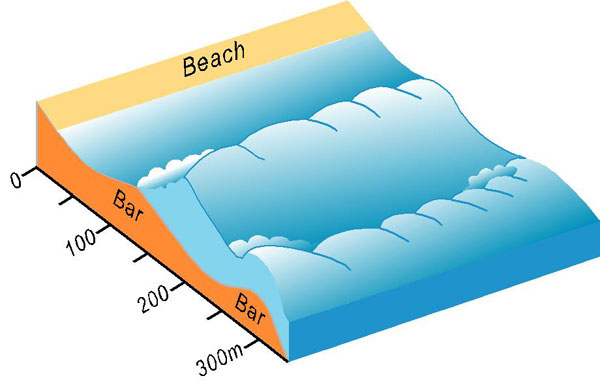
Figure 1. Dissipative Wave-dominated beach conceptual model showing waves spilling over two shore parallel bars located up to a few hundred metres offshore.
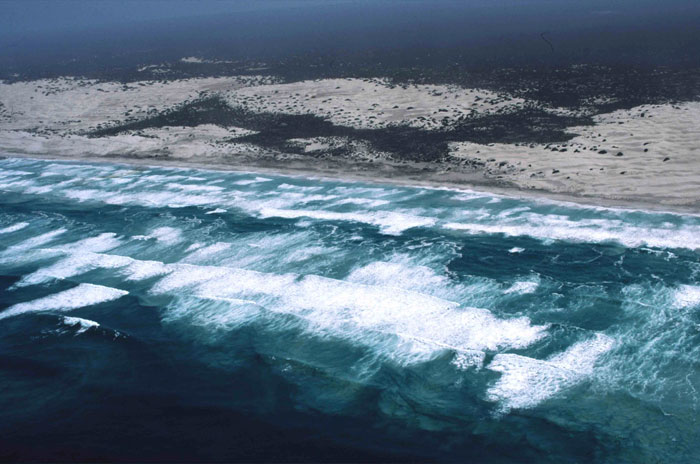
Figure 2. A high energy double bar dissipative beach with a 500 m wide surf zone and multiple lines of breakers. Dog Fence Beach, western Eyre Peninsula, South Australia (Photo: A D Short).
2. Longshore bar and trough
Longshore bar and trough beaches are characterised by waves averaging 1.5-2 m, which break over a near continuous longshore bar located between 100-150m seaward of the beach, with a 50-100m wide, 2-3m deep longshore trough separating it from the beach. The beach face is straight alongshore and depending on sand size may have a low tide terrace (fine sand) and/or a reflective beach with beach cusps (medium sand). The bar is usually crossed by rips every 250-500m. The deep trough and the presence rips make this a particularly hazardous swimming beach. In Australia longshore bar and trough more commonly occurs as an outer second bar.
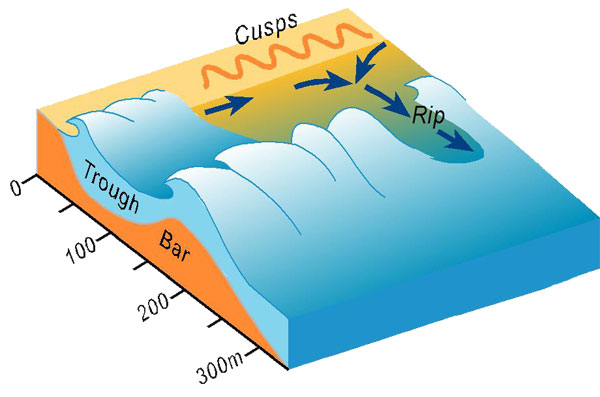
Figure 3. Longshore bar and trough Wave-dominated beach conceptual model showing the offshore bar and trough, with rip feeder currents converging to flow seaward as a rip current (arrows).
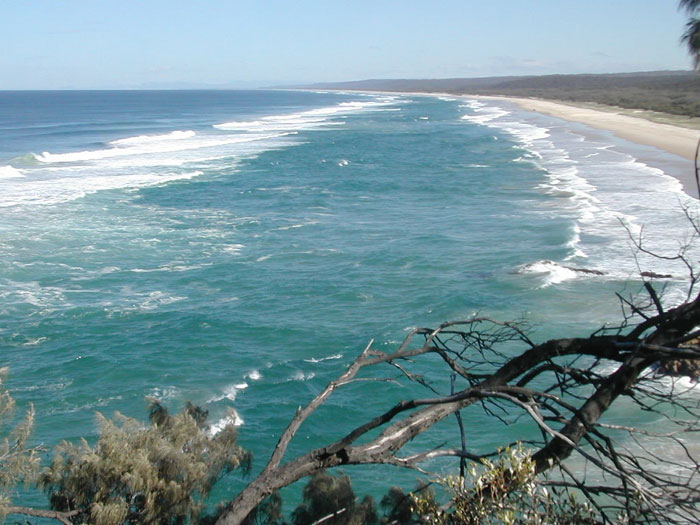
Figure 4. A shore parallel longshore bar separated by a wide deep longshore trough, North Stradbroke Island, Queensland (photo: A D Short).
3. Rhythmic bar and beach
Rhythmic bar and beach type commonly occurs around the southern Australian coast. They usually consist of relatively fine-medium (0.3mm) sand and exposure to waves averaging more than 1.5m. They are characterised by an outer bar which is separated from the beach by a deep trough, however unlike the longshore bar and trough type, the bar varies in width and elevation alongshore, and it is rhythmic. Waves break more heavily on the shoreward-protruding rhythmic bar sections with the broken wave and white water flowing shoreward as a wave bore. The bore then flows off the bar into the deeper tough, where it moves shoreward and longshore as a rip feeder current. Part of the wave reforms in the trough and breaks again on the shore. The water from both the wave bore and the swash piles up in the rip feeder channel and moves sideways toward the adjacent rip embayment. The converging feeder currents turn and flow seaward as a rip current through the trough and across the deeper seaward-protruding sections of the rhythmic bar.
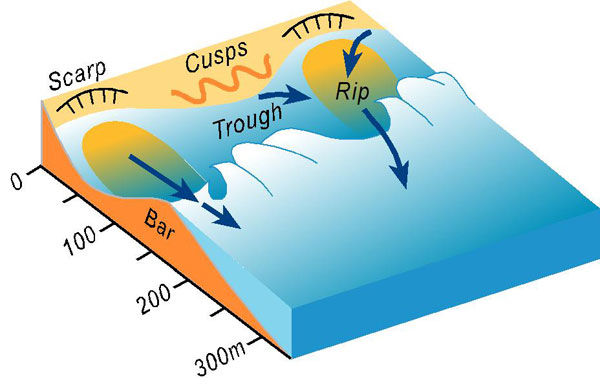
Figure 5. Rhythmic bar and beach Wave-dominated beach conceptual model with a rhythmic bar and beach consisting of a seaward protruding section 9with cusps) and an embayed section with a curving erosion scarp. Converging rip feeder currents flow seaward as a strong rip current (arrows).
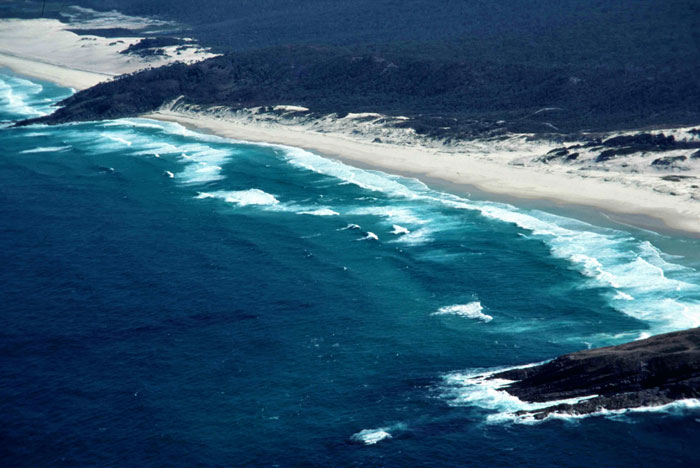
Figure 6. A rhythmic bar and beach, with two deep rip channels separating the shoreward protruding sections of the bar, Treachery Beach, New South Wales (photo: A D Short).
4. Transverse bar and rip (TBR)
Transverse bar and rip (TBR) type is the most common and extensive of Australias wave-dominated beach types. They occur primarily on beaches composed of fine to medium sand (0.3mm) and exposed to waves averaging 1.5m. This beach type received its name from the fact that the bars are transverse or perpendicular to and attached to the beach, separated by deeper rip channels. The bars and rips are usually regularly spaced and range from 150m on the lower energy sea-dominated northern Australian beaches to 250m along the higher energy southeast coast and 350m along the exposed southern coast. Waves break heavily on the shallower bars and less in the deeper rip channels resulting in lower energy swash in lee of the bars and higher energy swash/shorebreak in lee of the rips. The shoreline is rhythmic building a few metres seaward behind the attached bars as deposition occurs forming the megacusp horns and being scoured out and often scarped in lee of the rips forming the embayments. The surf zone has a cellular circulation pattern. Waves tend to break more on the bars and move shoreward as wave bores. This water flows both directly into the adjacent rip channel and, closer to the beach, into the rip feeder channels located at the base of the beach. The water in the rip feeders converge and return seaward as a strong rip current.
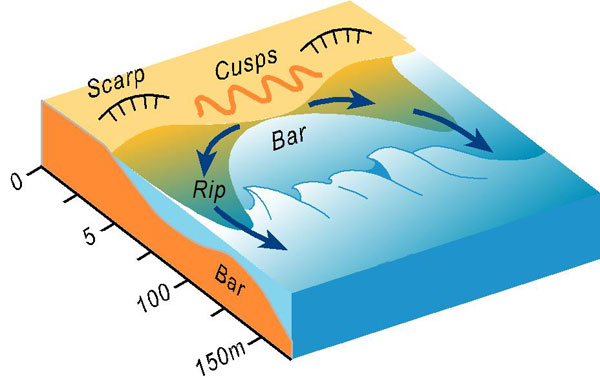
Figure 7. Transverse bar and rip (TBR) Wave-dominated beach conceptual model. Note the bar is attached to the beach where it protrudes seaward, while the adjoining embayments are scarped. Waves flow off the shallow bar onto the feeder channels, the water converging and flowing seaward in the deeper rip channel as a strong rip current (arrows).
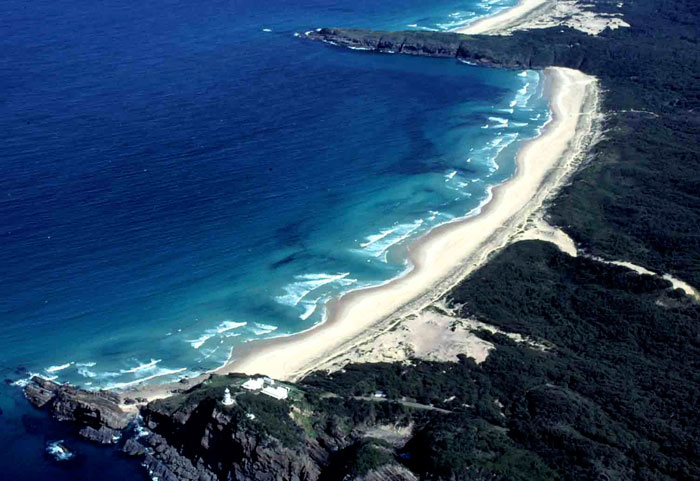
Figure 8. Well developed shore-attached transverse bars and adjacent deeper rip channels at Lighthouse Beach, New South Wales (photo; A D Short).
5. Low tide terrace
Low tide terrace beaches tend to occur when waves average about 1m and sand is fine to medium. They are characterised by a moderately steep beach face, which is joined at the low tide level to an attached bar or terrace, hence the name – low tide terrace. The bar usually extends between 20-50m seaward and continues alongshore, attached to the beach. It may be flat and featureless, have a slight central crest, called a ridge, and may be cut every several tens of metres by small shallow rip channels, called mini rips. At high tide when waves are less than 1m, they may pass right over the bar and not break until the beach face, which behaves much like a reflective beach. At spring low tide, however, the entire bar is usually exposed as a ridge or terrace running parallel to the beach and waves break by plunging heavily on the outer edge of the bar. At mid tide, waves usually break right across the shallow bar, when they are most likely to generate rip currents. The water is returned seaward, both by reflection off the beach face, especially at high tide, and via the mini rips, even if no rip channels are present. The rips, however, are usually shallow, ephemeral or transient meaning they will flow strongly for a few minutes then dissipate.
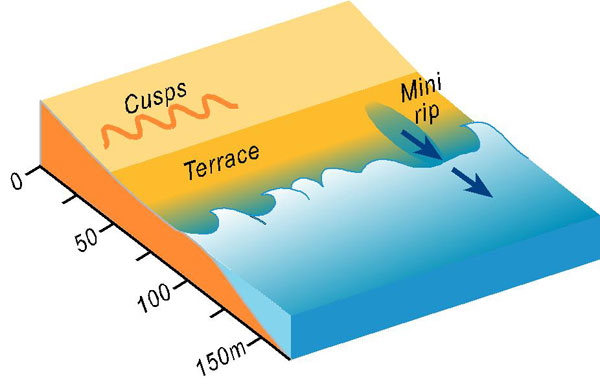
Figure 9. Low tide terrace Wave-dominated beach conceptual model showing the beach face with cusps and continuous low tide terrace (at low tide) cut by a small mini-rip.
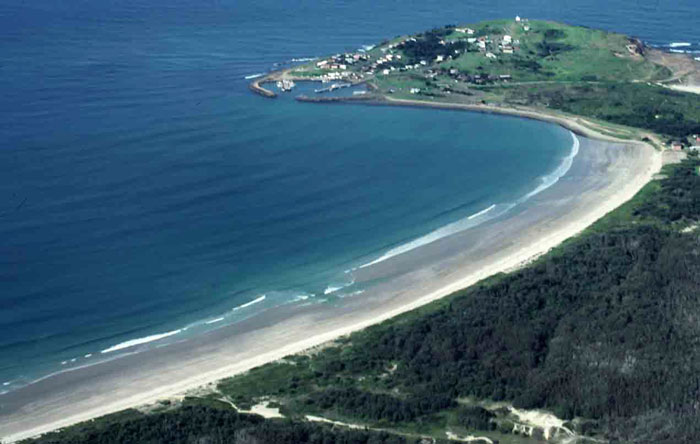
Figure 10. A wide low gradient low tide terrace cut by one small mini-rip, shown here at low tide, Crowdy Head, New South Wales (photo: A D Short).
6. Reflective
Reflective sandy beaches lie at the lower energy end of the wave-dominated beach spectrum. They are characterised by relatively steep, narrow beaches usually composed of coarser sand (0.4mm). On the open Australian coast, sandy beaches require waves to be less than 0.5m to be reflective. For this reason they are also found inside the entrance to bays, at the lower energy end of some ocean beaches and in lee of the reefs and islets that front many beaches. Reflective beaches are Australia’s most common beach type occurring in every state though they are more common around the southern half of the continent. Reflective beach morphology consists of the steeper, narrow beach and swash zone, with beach cusps commonly present in the upper high tide swash zone. They have no bar or surf zone as waves move unbroken to the shore, where they collapse or surge up the beach face.
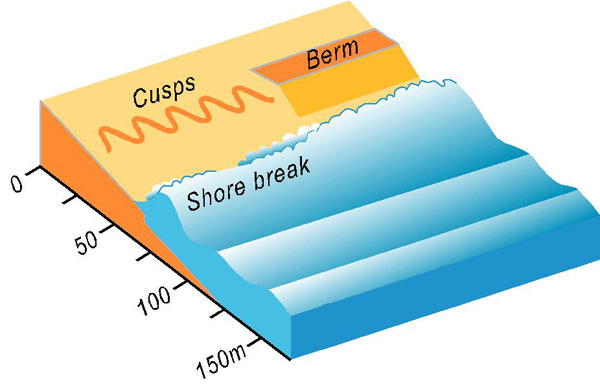
Figure 11. Reflective Wave-dominated beach conceptual model showing waves breaking right at the shore where they may form cusps (left) or a straight berm (right) on the high tide beach.
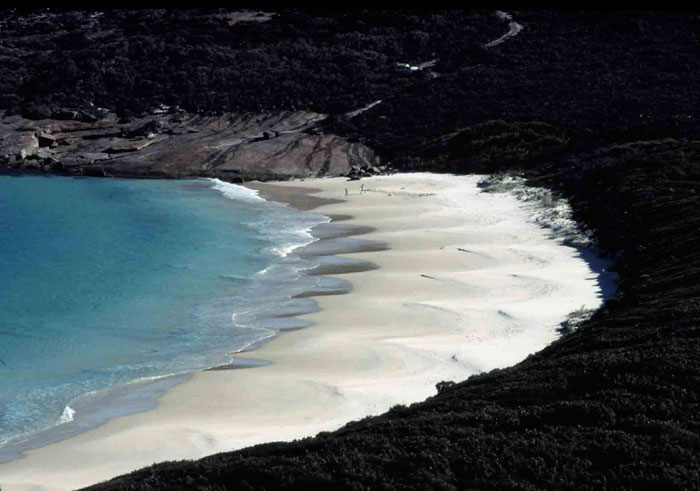
Figure 12. A well developed reflective beach containing high tide beach cusps at Hammer Head, south Western Australia (photo: A D Short).
Tide-modified beaches | Tide-dominated beaches | Beaches plus rock/reef flats
Author
Andrew Short – University of Sydney


